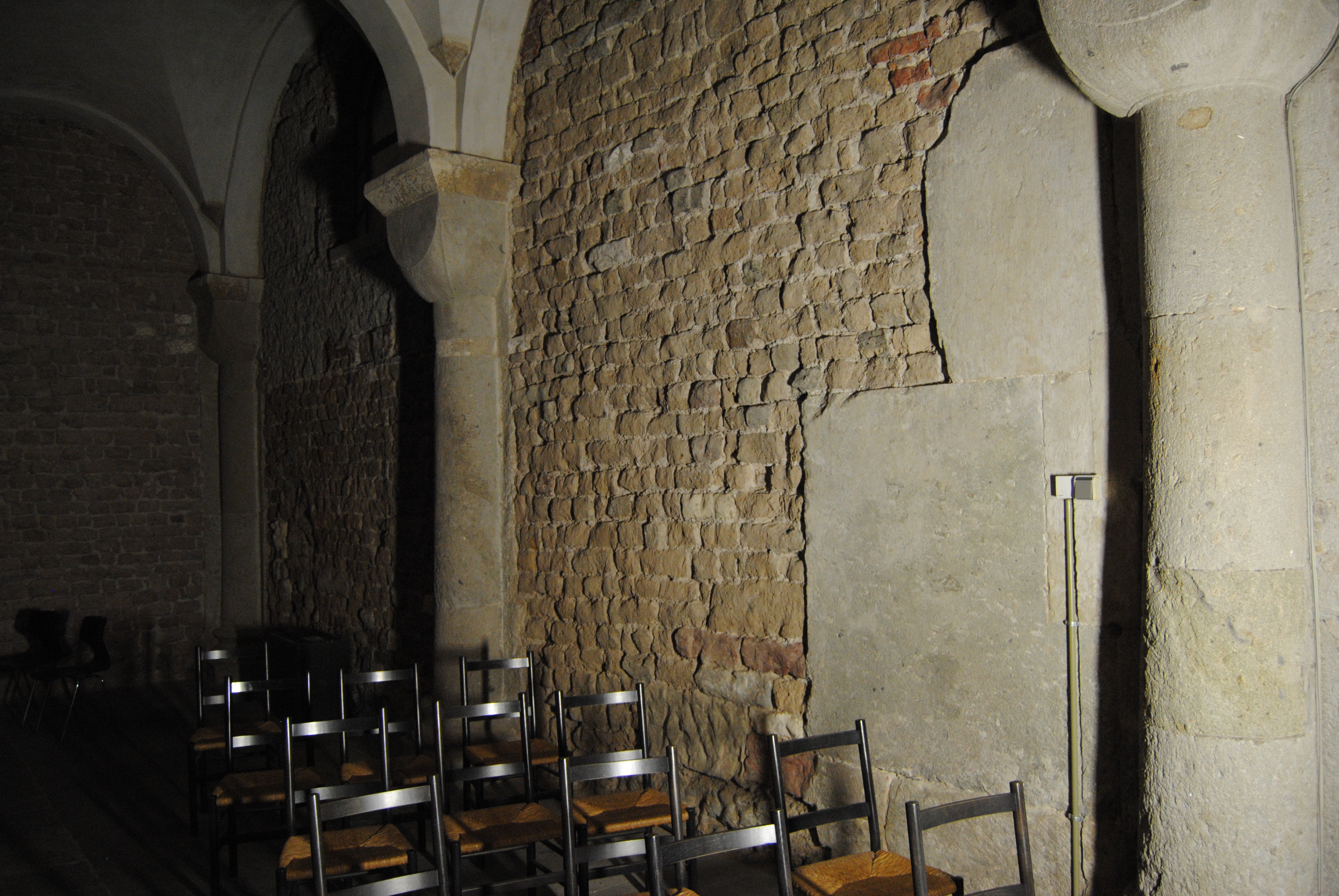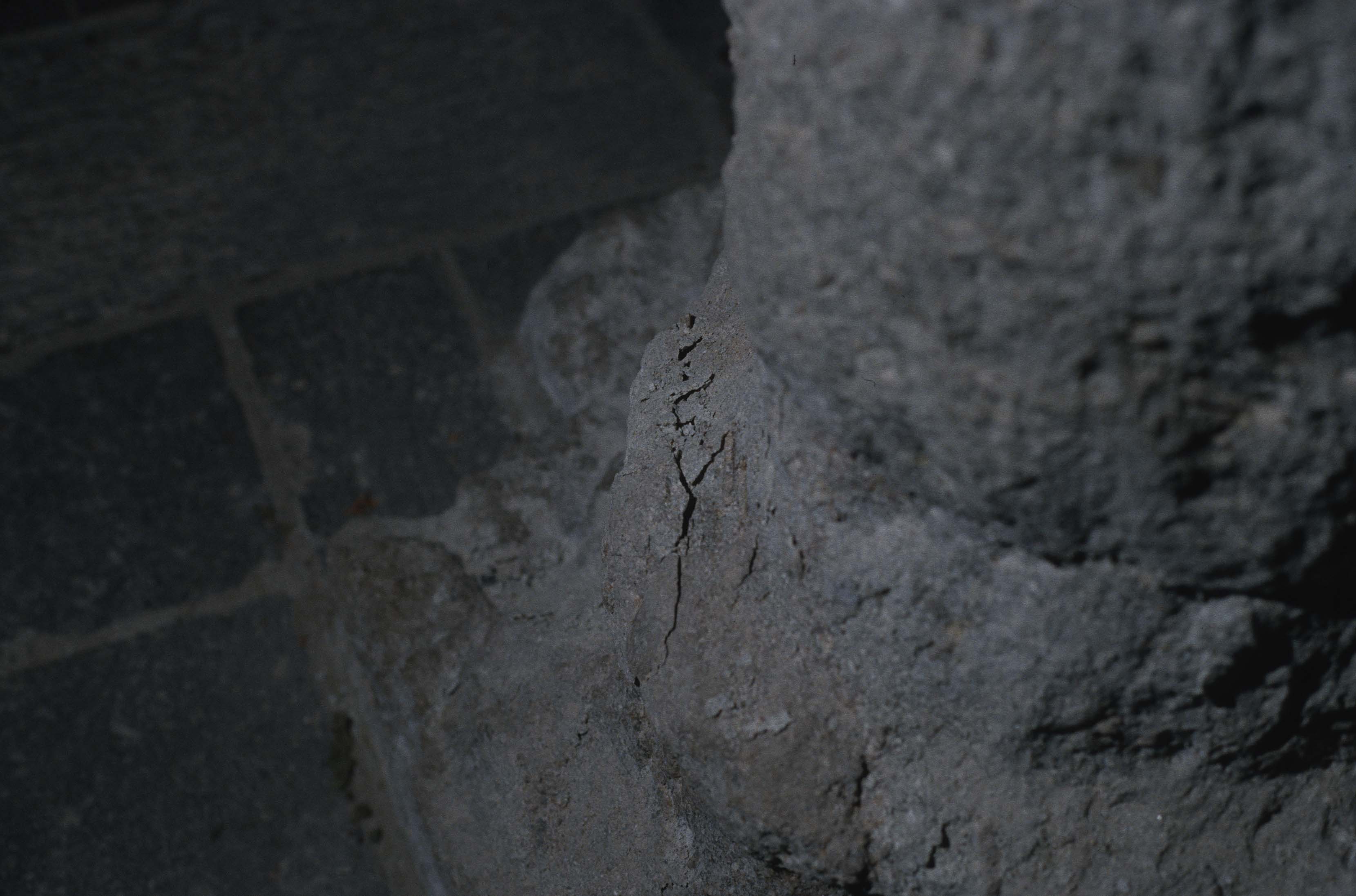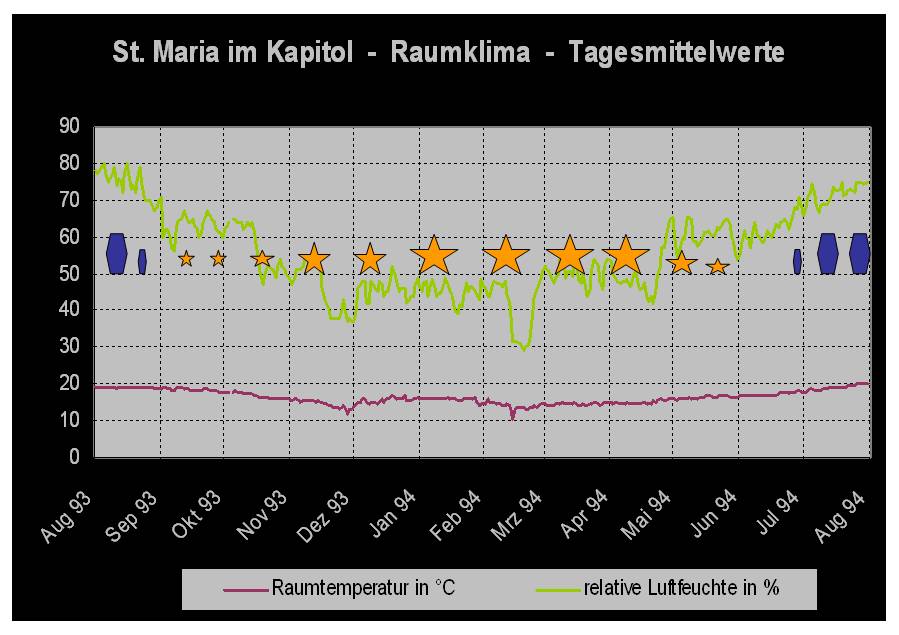Salt crystallization in the crypt of St.Maria im Kapitol (St. Mary's in the Capitol) in Cologne
Author: Steffen Laue
English version by Sandra Leithäuser
back to Case Studies
Salt damage in the crypt of St Maria’s in the Kapitol, Cologne[edit]
St.Maria in the Kapitol was built in the mid-11th Century, destroyed in World War II and reconstructed from the 1950s onwards (see Figure 1).
- Figure 1: St. Maria in the Kapitol Church, Cologne
The crypt is situated underneath the choir. Its walls still consist of building stone from the Romanesque period (Figure 2) and the vaults still hold fragments of Romanesque wall paintings.
- Figure. 2: Crypt of St. Maria’s in the Kapitol with its tuff stone walls
In the mid-19th Century the crypt was used for storing salt. Because a heating system had also been installed in the crypt during reconstruction, the surfaces of the crypt suffered from severe salt deterioration (Figure 3).
- Figure 3: Salt damage on trachyte column
During the 1990s the crypt was thoroughly examined at Cologne University in connection with the BMBF- research project „Conservation of historic wall paintings“[Laue:1997]Title: Einfluss des Porenraums und des Raumklimas auf die Verwitterung von Steinen durch lösliche Salze
Author: Laue, Steffen . The examination confirmed severe salt damage on building stone, but also on plastered walls.
. The examination confirmed severe salt damage on building stone, but also on plastered walls.
Salts and indoor air climate in the crypt[edit]
The most common salts crystallizing in the crypt are halite (NaCl) and nitronatrite (NaNO3). Secondary, in some areas thenardite [Na2SO4], mirabilite [Na2SO4.10H2O], trona [Na3H(CO3)2.2H2O], epsomite [MgSO4.7H2O] and gypsum [CaSO4.2H2O]. The crystallization behavior of the salts was investigated on reference areas and in combination with measurements of the indoor air climate over a period of 3 years. Responsible for the climate in the crypt during the 1990s, was a non-stationary automatic air heating system: if temperature falls below the base temperature of approximately 10°C, the heating system controls the room temperature. In periods of usage a temperature of around 15°C is pivotal. Every year, around October the heating system switches itself on automatically. If the temperature rises above the limit, it switches itself off. This is the case, as soon as the base- or usage temperature has been reached, due to warming from the heating system, or in spring, when the external temperature rises.
The room climate of the crypt is shown in Figure 4. The temperature fluctuates between 11°C in winter and up to 20°C in summer. The relative humidity varies between 30% and 80% RH. A high relative humidity above 65%RH was observed from June to September. Additionally, Figure 4 shows the crystallization periods of the salts halite and nitronatrite.
- Figure 4: Indoor air climate and salt crystallization in the crypt in 1993/1994
The investigation of the interaction between the crystallization of salts and the indoor air climate has shown, that the main damage in the crypt takes place on walls and columns that are subjected to the salts halite (NaCl) and nitronatrite (NaNO3). The reason for the occurrence of this damage is the hygroscopic properties of both salts. At relative humidity levels of more than 75% during the summer months, halite and nitronatrite dissolve and can be found as a salt solution on, or inside the walls. Within the relative humidity range of approx. 65%- 75% RH halite and nitronatrite re-crystallize or respectively dissolve. Below 65% RH only the crystallization of these to salts was observed. Therefore, there is a connection between the crystallization from the walls solution or the re-dissolving of the saltphases and the relative humidity: Whenever it fluctuates to below 75% RH, dissolving or crystallization processes have to be expected. The relative humidity in the crypt was predominantly above 65% RH during the winter months, therefore seasonal fluctuation is the main contributing factor to the deterioration of the crypt.
Literature[edit]
| [Laue:1997] | Laue, Steffen (1997): Einfluss des Porenraums und des Raumklimas auf die Verwitterung von Steinen durch lösliche Salze. Dissertation, Fachbereich Geowissenschaften, Johannes Gutenberg-UniversitätUniversität, Mainz |  |



